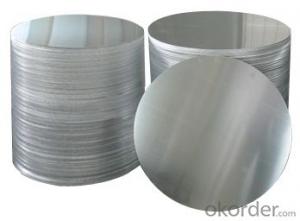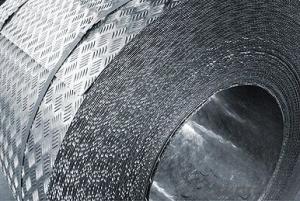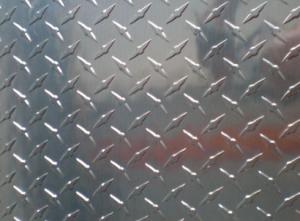Champagne Anodized Aluminum Coil for Rerolling - Direct Casting
- Loading Port:
- Shanghai
- Payment Terms:
- TT OR LC
- Min Order Qty:
- 5 m.t.
- Supply Capability:
- 20000 m.t./month
OKorder Service Pledge
OKorder Financial Service
You Might Also Like
Specification
1.Structure of Direct Casting Aluminium Coil for Rerolling
Direct Casting Aluminium Coil for Rerolling for Outer Building is one semi-finished aluminium material. This strip can be rolled down to aluminium coil,sheet,circle ect. The alloy AA1050 is widly used in building, industry ect. Its weight is much lower than steel. So many customers choosed aluminium material instead of steel.
2. Main features of Direct Casting Aluminium Coil for Rerolling
a.Competitive price---We have our own mills and can produce mill finished aluminium coils, so we can control the production cost better.
b.Professional after-sale service---We have more than 15 years exportation experience and you need not worry about the exporation problems.
c.Fast delivery time---We can control the delivery time within 35 days.
3. Image



4. Product Specification
| Alloy | Temper | Thickness | Width | Weight |
| AA1050 | F,H18 | 3MM-8MM | 1000MM-1500MM | About 2.5 tons |
5.FAQ:
What is the quality standard?
---Usually our standard is GB3880-2006
What is the largest width?
---It is 2300mm
What is the MOQ?
---Usually we can accept 80 tons.
- Q: Can aluminum sheets be utilized as a material for constructing caravan roofs?
- <p>Yes, aluminum sheets can be used for caravan roofs. They are lightweight, durable, and resistant to corrosion, making them an ideal material for this purpose. Aluminum sheets are easy to install and maintain, and they can also reflect heat, helping to keep the interior of the caravan cooler. However, it's important to ensure that the aluminum sheets are of good quality and properly sealed to prevent water ingress and to maintain structural integrity over time.</p>
- Q: Are aluminum sheets suitable for electrical bus bars?
- Yes, aluminum sheets are suitable for electrical bus bars. Aluminum is a lightweight and cost-effective material that exhibits good electrical conductivity. It is commonly used in various electrical applications, including bus bars, due to its ability to efficiently carry high electrical currents while dissipating heat effectively.
- Q: This question asks for methods to guarantee the safety and reliability of a project when using aluminum sheets.
- <p>To ensure your project's safety and reliability using aluminum sheets, follow these steps: 1. Choose high-quality aluminum sheets with the appropriate thickness and grade for your project's requirements. 2. Ensure proper design and engineering to withstand expected loads and stresses. 3. Use appropriate fasteners and joinery methods to secure the sheets, avoiding stress concentrations. 4. Implement corrosion protection measures such as coatings or anodizing, especially for outdoor applications. 5. Perform regular inspections and maintenance to check for signs of wear, corrosion, or damage. 6. Adhere to safety standards and regulations for aluminum construction. 7. Consult with professionals or engineers experienced in aluminum fabrication for guidance and validation.</p>
- Q: Can aluminum sheets be anodized for aesthetic purposes?
- Yes, aluminum sheets can be anodized for aesthetic purposes. Anodizing is a process that creates a protective oxide layer on the surface of aluminum, which can be further enhanced with various colors and finishes for aesthetic appeal.
- Q: What are the common sizes of aluminum sheet?
- The sizes of aluminum sheets commonly differ based on specific requirements and industry applications. However, the market offers some standard sizes that are readily available. These sizes typically vary in thickness from 0.025 inches to 0.125 inches and are offered in different widths and lengths. Among the common width options are 36 inches, 48 inches, and 60 inches, while the length can range from 96 inches to 144 inches. Furthermore, smaller sizes like 12 inches by 24 inches or 24 inches by 24 inches can also be found, which are frequently utilized for smaller projects or crafts. It should be noted that specialized aluminum sheet suppliers can provide custom sizes as well.
- Q: Can aluminum sheet be used for electrical wiring?
- No, aluminum sheet cannot be used for electrical wiring.
- Q: What is the typical sheet size tolerance for aluminum sheets?
- The typical sheet size tolerance for aluminum sheets is typically around +/- 0.005 to 0.010 inches.
- Q: Which kind of glue can bond hard shell plastic and iron sheet or aluminum sheet?
- You can buy the glue for bonding wood in hardware shop, 402 or 502 are all ok.
- Q: Are the aluminum sheets suitable for outdoor applications?
- Yes, aluminum sheets are suitable for outdoor applications. Aluminum is highly resistant to corrosion and weathering, making it an ideal choice for outdoor use. Additionally, aluminum sheets are lightweight, durable, and have excellent thermal and electrical conductivity, further enhancing their suitability for various outdoor applications.
- Q: Are aluminum sheets suitable for solar panel applications?
- Yes, aluminum sheets are suitable for solar panel applications. Aluminum is lightweight, durable, and has excellent thermal conductivity, making it an ideal material for solar panel frames and backsheets. It is also corrosion-resistant, cost-effective, and widely available, making it a popular choice in the solar industry.
Send your message to us
Champagne Anodized Aluminum Coil for Rerolling - Direct Casting
- Loading Port:
- Shanghai
- Payment Terms:
- TT OR LC
- Min Order Qty:
- 5 m.t.
- Supply Capability:
- 20000 m.t./month
OKorder Service Pledge
OKorder Financial Service
Similar products
Hot products
Hot Searches
Related keywords




























